If you are as much of a Tintin fan as I am, you will know of General Alcazar, the knife-throwing military dictator who hits his target with remarkable accuracy. The Hyundai Alcazar too has been precisely aimed between the Creta and Tucson, to plug a big gap that existed in Hyundai’s SUV line-up. No, the Alcazar hasn’t been named after the Tintin character, but after the royal and resplendent Moorish Castles in Spain, which the company says has been the inspiration for its all-new SUV. That maybe marketing waffle for which some agency must have been paid millions, but the corny name apart, the Alcazar, now globally unveiled, points at the seriousness with which Hyundai is targeting the SUV space. The car I drove was a camouflaged prototype, not entirely to production-spec but it gave me a taste of what to expect.
Hyundai Alcazar: exteriors
Hyundai has extensively re-engineered and stretched the Creta’s platform on which the Alcazar is based, to essentially slip in an extra row of seats. This meant stretching the wheelbase to 2,760mm, the longest in its class and a massive 150mm more than the Creta, to unlock enough space to provide comfortable 6- and 7-seat configurations. But before we dive into the cabin, it’s worth highlighting the raft of external design changes that have given the Alcazar a distinct identity of its own. The Alcazar’s chrome-studded grille looks a lot more premium than the Creta’s and while the headlight cluster is the similar, redesigned fog lamps with chrome surrounds, a slimmer front scuff plate distinguishes it from its smaller sibling. The big change, of course, is on the side, which gets an extra-long section and a separate quarter glass, which substantially increase the rear overhang. Upsizing to 18-inch wheels (from the Creta’s 17-inchers) has made a world of a difference. Not only do the larger wheels give the Alcazar a nicely planted stance but they help in watering down the bulky effect of that massive overhang. The thick, double character lines on the rear fender and the blacked-out D-pillar give some relief as well and nicely balance the tail section.
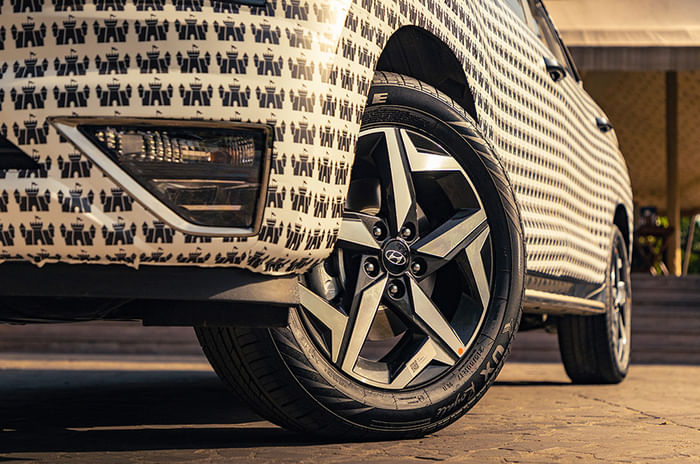
The integrated footstep looks neat too but don’t really serve any useful purpose, as the Alcazar is quite low and the wide rear door makes getting in and out pretty easy.
The horizontal rear tail-lights, linked with a metal strip and beefy scuff plate, are again unique to the Alcazar, but bits like the bonnet, front doors, rear-view mirrors are common with the Creta. Overall, the Alcazar looks much more grown up than the Creta but still doesn’t have the same road presence as the wider and overall longer Safari or the Hector Plus, for that matter.
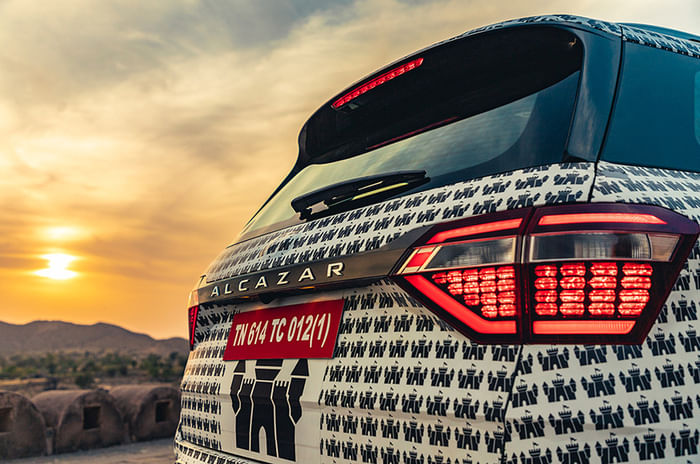
Hyundai Alcazar: interiors
And width isn’t something the Alcazar has in abundance. Though substantially longer than the Creta, it’s just as wide (or narrow) as the car it’s derived from, and that gives it a bit of a disadvantage against other three-row SUV rivals. But Hyundai designers have used every millimetre of interior space to make the cabin as comfortable as possible. Each row of seats, has a range of adjustments that allow passengers to juggle space between all three rows and find a happy compromise. The front buckets are comfy enough but it’s the way the middle row has been designed that is truly impressive. The 7-seater version with a 60:40 split bench gets good under-thigh support, adjustable back rests, and if there’s no one in the third row, it can be slid back for more knee room, which is otherwise compromised by the flip up tray tables. Sitting three abreast is a bit of a squeeze and accentuates the narrow width of the cabin. So, if you don’t need the extra seat, it’s better to go for the 6-seater variant with captain’s seats, which are even more comfortable and come with unique floor-mounted central armrest with cupholders and extra storage space.
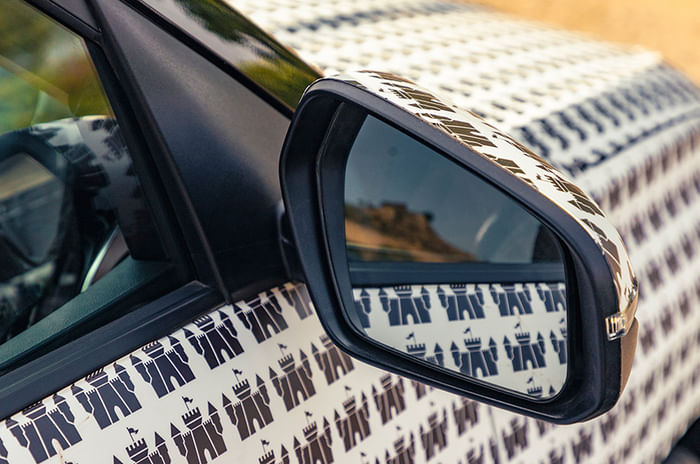
The one-touch tumble operation, which flips and folds the middle seats for easy access to the third row, is really slick. However, wiggling into the rearmost seats does take some effort and it is best for kids, though it can used by adults at a pinch. You sit low down but not completely on the floor, and if you slide the middle row forward for more knee room and recline the back rest, short trips are tolerable. A set of dedicated air con vents to keep you cool and a sense of airiness from the large rear quarter glass make the third row easier to endure too. You also get a pair of USB ports.
Boot space, with all with all three rows in place, is quite impressive. A largish bag, along with a few smaller soft ones, can be squeezed behind the third row, and an under floor compartment gives you some additional storage. Flip the last row down and boot space increases substantially to swallow a mountain of luggage.
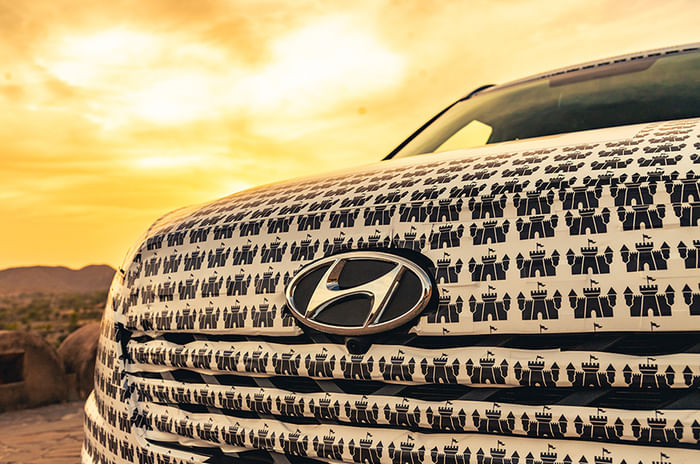
Hyundai hasn’t shared the Alcazar’s final equipment list, and with the dashboard also camouflaged, it was hard to tell what the Alcazar will come with. It’s safe to say, however, that the Creta’s 10.25-inch touchscreen infotainment system with Android Auto and Apple CarPlay, along with Hyundai’s connected car tech with wireless charging and a 360 degree camera, will be carried over. The Alcazar will also get a few more goodies than the Creta, like a bigger digital instrument panel with multiple modes and configurable ambient lighting. What we do know for sure is that the Alcazar gets the Creta’s panoramic sunroof and rear disc brakes, which are standard across all variants.
Hyundai Alcazar: driving impressions
The Alcazar gets two engine options –the tried and tested 115hp,1.5-litre diesel from the Creta, which has been recalibrated for the bigger and heavier 7-seater, and a petrol, which isn’t the same 140hp 1.4-litre TGDI unit but a larger and more powerful 159hp 2.0-litre naturally aspirated motor, in keeping with the Alcazar’s higher positioning and price point. This petrol is essentially the same 2.0-litre ‘Nu’ engine found under the hood of the Tucson and Elantra, but the Alcazar gets the latest, third-generation version, which is more efficient, refined and gets a slight bump up in power (by 7hp). Both, the diesel and petrol Alcazar come with 6-speed manual and 6-speed torque converter automatic gearbox options. There’s no DCT available.
For our brief test drive, we were offered only the petrol variant with the 6-speed manual. First impressions threading through the labyrinth of narrow lanes outside Fort Alila in Bishangarh is of a smooth but slightly heavy clutch and a nice and accurate short-throw gearbox. On the first open stretch I got, I discovered an engine that is smooth and very flexible. It pulls cleanly from 1,000rpm to nearly 7,000rpm in one seamless, strong surge. Like most long-stroke engines, it’s not very free-revving but has a wide and very useable power band and sufficient torque to compensate for the tall gearing (it does almost 60kph in first gear). You do miss the mid-range punch and the joy of riding a wave of torque you only get in a turbo-petrol and, in contrast, the linear power delivery of the Alcazar’s 2.0-litre engine masks its speed. But be in no doubt, despite being around 150kg heavier than the 1.4 TGDI Creta, the Alcazar is quicker and, in fact, when we finally get to strap our VBOX on it, it could be the fastest accelerating SUV in its class.
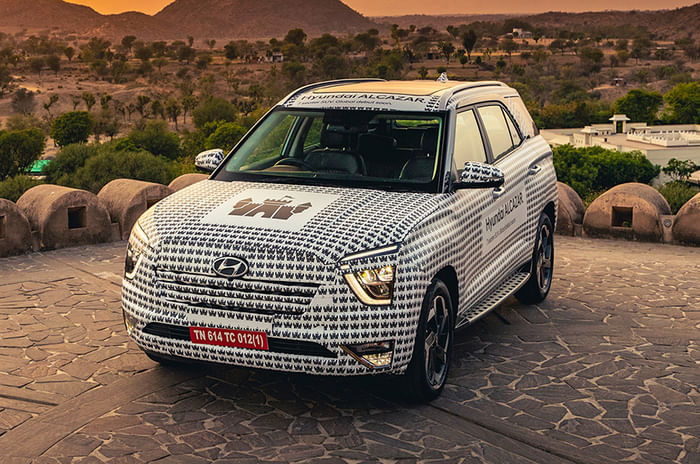
Tuned more towards comfort than sporty handling, the Alcazar has a cushy ride and bumps are nicely rounded off. The long wheelbase and stiff body (made from 75 percent high-strength steel) gives you a lot of confidence at high speed. There’s a fair bit of body roll through corners and though the handling isn’t sharp or agile, the mature dynamics make this car easy to control. Whilst the ride comfort in the first and second row is exceptionally good, the same can’t be said about the third row. The issue is that the rear most seat passengers are sitting on the rear axle line and can feel the bumps a fair bit more.
Hyundai Alcazar: first verdict
As pure 7-seater the Alcazar works well if you limit the third row to small children, but it makes a better case for itself as a roomy and comfortable 4-or 5-seater. The Alcazar’s middle row is particularly comfy, especially the variant with the captain’s seats, which is likely to account for the bulk of Alcazar sales. Expected in showrooms at the end of April, the Alcazar is likely to be priced a notch under the Tata Safari and Hector Plus, or around Rs 1.5 lakh more than the Creta. That’s a sweet spot in the market that Hyundai hopes to grab.




























